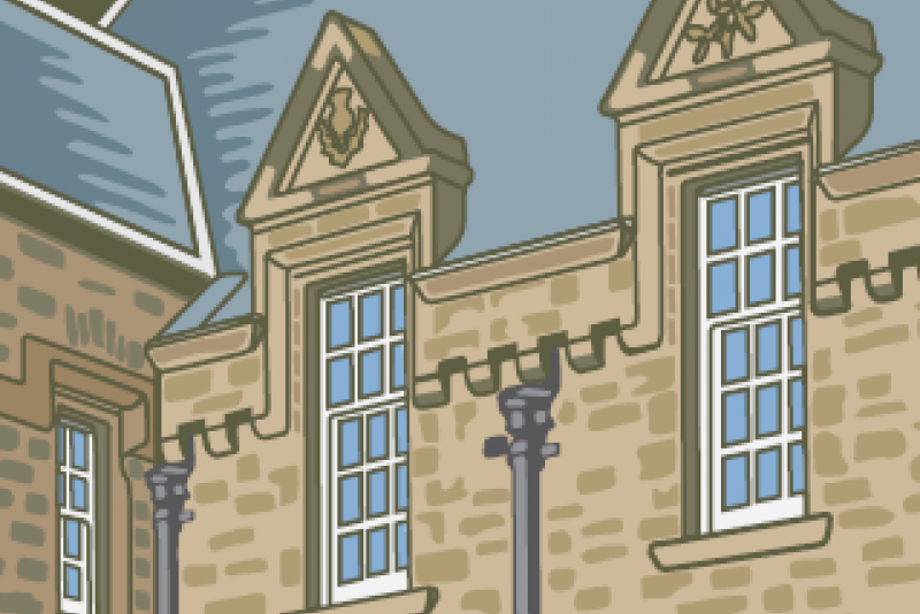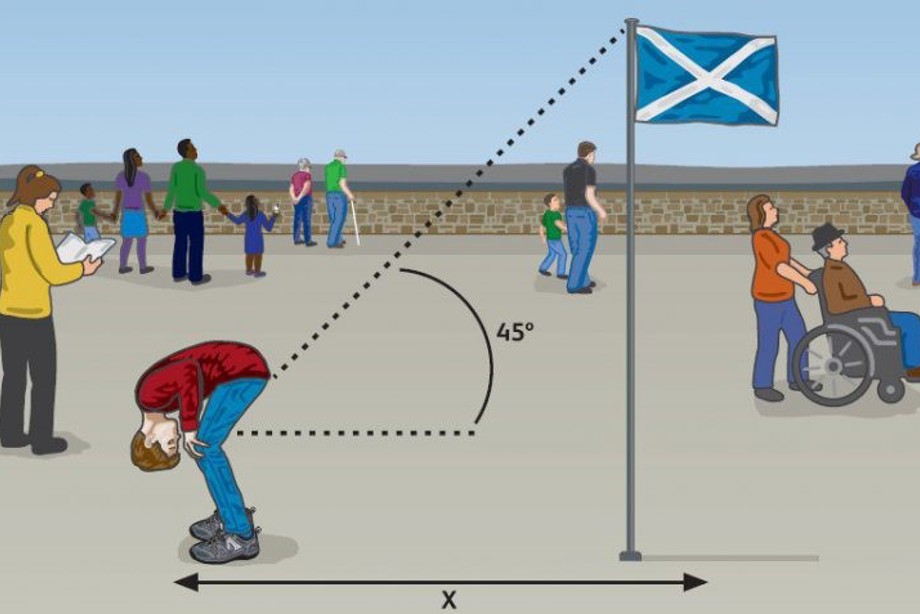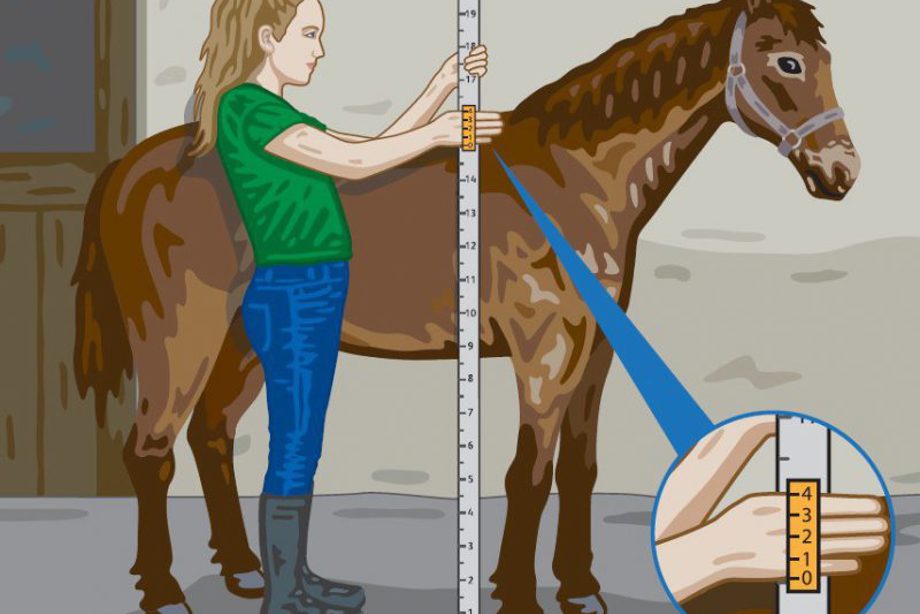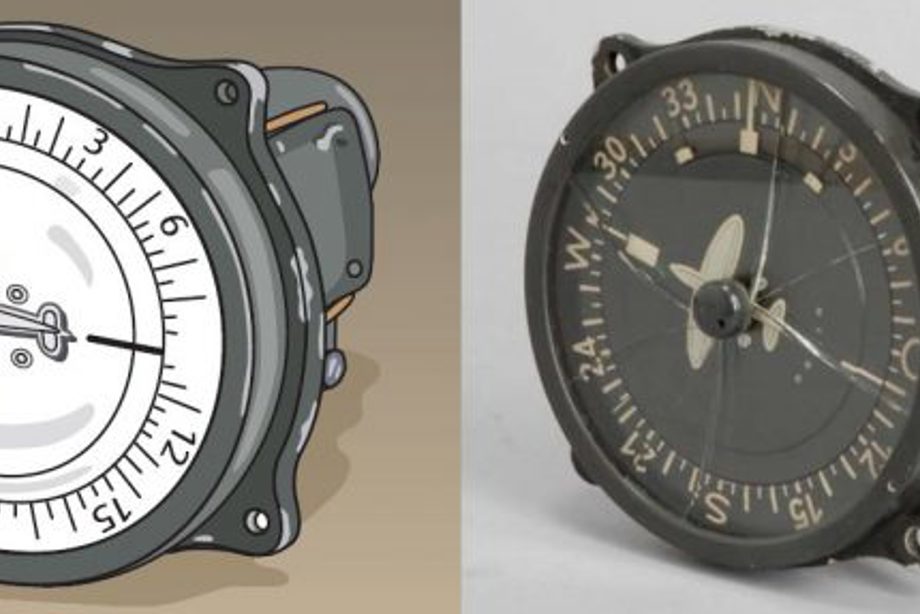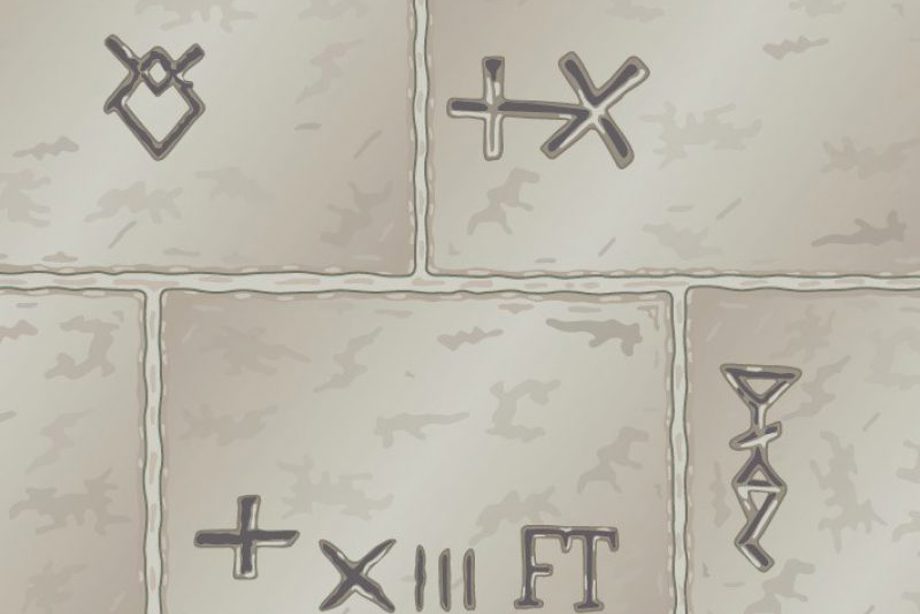Maths is everywhere - including at Edinburgh Castle. Have a go at the maths challenges below to discover how maths shaped shaped life at Edinburgh Castle. They can be completed at home, in school or outside.
Shape spotters
Edinburgh Castle is made up of lots of different shapes. Each shape was chosen carefully to make the castle stronger, easier to defend or just to look nice.
Try to find the shapes listed below around your house or when you're out for a walk. Why do you think each item you find is that shape?
- Cylinder
- Rectangle
- Arch
- Triangle
A different angle
Accurate measurements were essential when building castles. Builders used lots of different ways of measuring over the years including string, sticks, compasses and even body parts!
Have a go at working out the height of a tree, pole or building - either at school, in the garden or when out for a walk.
- Pick a landmark and stand at its base. Estimate its height and remember your estimate.
- Walk away, stopping regularly to look between your legs
- Stop walking when you can see the top of the landmark between your legs.
- Measure the distance between yourself and the landmark using paces or a measuring tape.
- This distance is roughly equal to the height of the landmark. Was your original estimate close to this?
How does this work?
It works because you are looking at the top of the landmark at a 45 degree angle. This makes a right angle triangle between the ground, landmark and your line of sight. Therefore the height of the landmark is the same as the distance that you are from that landmark
During war and training exercises soldiers call their food supply field rations. The 24 Hour Ration Pack can feed one person for one day, and includes high energy snacks, drinks and three main meals which are fully cooked and ready to eat. The ration pack in Edinburgh Castle has 36 items. What would you include in your 24 hour ration pack?
Measuring up
Horses' heights are measured in Hands (hh). This unit of measurement has been used since the time of ancient Egypt and was roughly the width of a man's hand. This eventually got a bit confusing, so in 1541 King Henry VIII standardised the measurement so that 1hh = 4 inches.
Work out how tall you are in hands.
Measure yourself in inches using a tape measure or ruler. If 1 Hand (hh) is equal to 4 inches, you need to divide your measurement by 4.
Example: 54 Inches divided by 4 equals 13.5. So we would call this 14hh
How many hands tall are you?
Find your way
The pilots of planes such as the Heinkel III would have navigated their way using a compass and maps.
Work out where North, South, East and West would go on this drawing using the photo next to it of a real Heinkel III plane compass in the National War Museum.
Why do you think there is an O on the compass?
Pilots would have looked for large buildings, hills and rivers on the ground below to help their navigation.
Find a high point of ground near you, or use a viewpoint on Google Maps like the top of Arthurs Seat.
Use a compass to find north. You can find a compass on most smart phones or on Google Maps.
If you turn 90 degrees to the left what can you see now?
Edinburgh Castle was one of the most attacked places in the UK. During some attacks the castle had 120 soldiers. If each soldier needed 3 litres of water per day to drink, wash and cook with, how much water would 120 soldiers need each day? If the well holds 60,000 litres, how long could 120 soldiers survive during an attack?
This trail was produced by National Museums Scotland, Historic Environment Scotland and The Regimental Museums in Edinburgh Castle and designed and illustrated by Mark Dawson. The activities are aimed at upper primary pupils and cover aspects of Numeracy and Mathematics and Social Studies within the Scottish Curriculum for Excellence.
It can be used at home or at school - there's a printable PDF version too.
You can also find the original trail - designed for on-site use at Edinburgh Castle - and the accompanying teachers' notes below.

